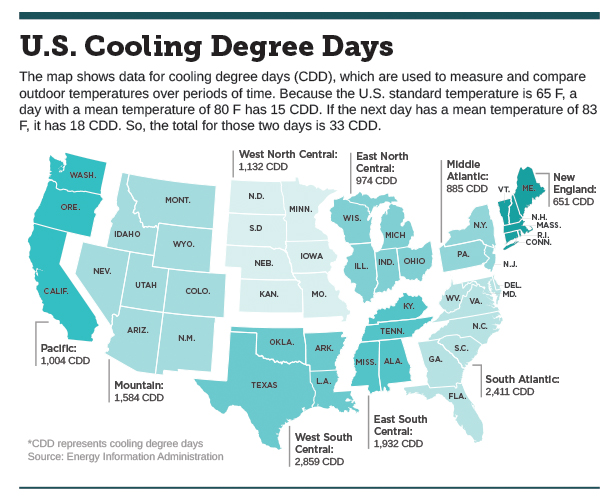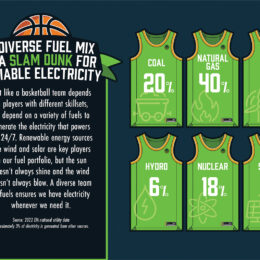
Energy Advisor
Weather can have a major impact on energy bills, and when the outdoor temperatures become extreme, your heating and cooling equipment works harder to keep your home comfortable.
Energy experts at Heartland REMC and throughout the utility industry use a measure called “degree days” to anticipate heating and cooling needs for the consumers they serve.
Never heard of a degree day? You’re not alone. Let’s take a look at what degree days are and why they are important for electric utilities.
Degree days measure how cold or warm a location is by comparing the average of the high and low (mean) of the outdoor temperatures recorded in that location to the standard U.S. temperature, which is 65 F. The assumption is that we don’t need heating or cooling to be comfortable when this is the outdoor temperature.
So, the more extreme the outdoor temperatures, the higher the number of degree days. And the higher the number of degree days, the higher the amount of energy used for space heating and cooling. Summer is in full swing, so let’s look at cooling degree days.
Cooling degree days are a measurement of how hot the temperature was on a given day or during a period of days. With summer temperatures rising, you’ll likely require more cooling for your home or business, which results in more cooling degree days. Variations in electric bills often follow closely with degree days, which is why electric utilities use this data to anticipate future energy demand.
Degree days are tracked for a variety of reasons. Farmers can better plan the planting of crops and timing for pest control, and weather experts can better assess climate patterns.
View degree days for our area, visit www.energystar.gov and search “degree days calculator.”
If charts and data aren’t your forté, no problem. Here are a few tips to help you save on energy bills this summer:
• Set your thermostat as high as comfortably possible. The smaller the difference between the indoor and outdoor temperatures, the lower your cooling costs will be. The Department of Energy recommends setting your thermostat to 78 F when you’re home and a higher setting for when you’re away.
• Turn off ceiling fans when you leave a room.
• Close window coverings, like curtains and blinds, during the day to block sunlight.
• Use caulk and weather stripping to seal air leaks around doors and windows.
If you have questions about your energy use or to learn more ways to save, give us a call or stop by our office. Heartland REMC is here to help.




